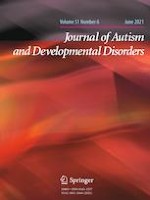01-09-2020 | Original Paper
Can I Learn to Play? Randomized Control Trial to Assess Effectiveness of a Peer-Mediated Intervention to Improve Play in Children with Autism Spectrum Disorder
Gepubliceerd in: Journal of Autism and Developmental Disorders | Uitgave 6/2021
Log in om toegang te krijgenAbstract
Play is often used in interventions to improve social outcomes for children with autism spectrum disorders (ASD). Play is a primary occupation of childhood and, therefore, an important outcome of intervention. The Ultimate Guide to Play, Language and Friendship (PLF) is a peer-mediated intervention for 6–11-year-old children with ASD. A total of 68 dyads were randomized to either a 10-week treatment first or waitlist control group. Results revealed a significant moderate intervention effect from pre- to post-intervention, which was maintained to the 3-month follow-up clinic session and generalized to the home environment. The findings support that the PLF intervention can be used to positively improve play in 6–11-year-old children with ASD.
Australian New Zealand Clinical Trials Registry, https://www.anzctr.org.au/ (ACTRN12615000008527; Universal Trial Number: U1111-1165-2708)
